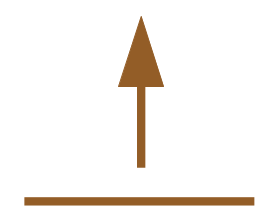



Let \(a \in \mathbb{Z}\) be an integer and \(p \in \mathbb{P}\) a prime number.
Fermat's small theorem tells us that:
Let \(a \in \mathbb{Z}\) be an integer and \(p \in \mathbb{P}\) a prime number.
Let show that the following statement \((S_a)\) is true:
Let verify if is true for the first term, that is to say for \( a = 0 \).
\((S_0)\) is true.
Let \( k \in \mathbb{N} \) be a natural number.
Let us assume that \((S_k)\) is true for all \( k \).
We will verify that is also the case for \((S_{k + 1})\).
Let us calculate \( (k+1)^p\).
With the Newton's binomial, we know that:
So,
Well, for all \( p, i \), with \( 1 \leqslant i \leqslant p \) we can apply the binomial's pawn formula :
But, we know by the Gauss' theorem that:
In our case,
If \( p \) divides the \( \binom{p}{i} \) binom, then \( p \) also divides the central member of \( (1) \).
So,
And as our recurrence hypothesis is:
These are all the congruences for the \( (k+1)^p \) calculation:
We then have by addition of the congruences:
Thus, \((S_{k + 1})\) est vraie.
Here, we have to prove it in the contrary direction, to verify if it is still true inside the \( \mathbb{Z}\) set.
In other words, let verify that \((P_{k - 1})\) is true.
Let us calculate \( (k-1)^p \).
\(p\) being a prime number by hypothesis, it will always be odd, and then:
Likewise, if \( p \) divise the \( \binom{p}{i} \) binom, then \( p \) also divides the central member of \( (1') \) :
Even if this central member contains an alternance of positive and negative numbers, its general quotient \( Q \) remains inside the \( \mathbb{Z} \) set.
We will also, like previously:
So these are all the congruences for the \( (k-1)^p \) calculation:
And finally,
\((P_{k - 1})\) est vraie.
The statement \((S_a)\) is true for its fisrt term \(a_0 = 0\) and it's hereditary from terms to terms for all \(k \in \mathbb{Z}\), upwards and downwards.
By the recurrence principle, that statement is true for all \(a \in \mathbb{Z}\).
And finally,
This therefore means that:
Now, we know from the Gauss' theorem that:
So on the other hand, if \((a \land p = 1)\), then:
And also,
And as a result,
 Go to the top of the page
Go to the top of the page